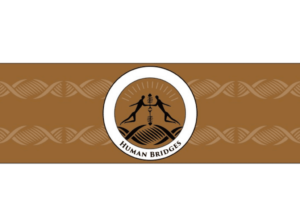Advances In Archaeology Allow Us To Understand Political Evolution And Social Change In Deep Time
 02-20-2024 ~ Western society is largely in the grips of an entrenched mythology that premodern non-Western states and empires were organized despotically, markedly different from how humans govern themselves in the contemporary West. There’s another common myth that dynamic periods of prosperity and well-being were exclusive to Europe during preindustrial times. We’re still reckoning with the 19th-century academic belief that human history developed along two major paths: the West and the rest.
02-20-2024 ~ Western society is largely in the grips of an entrenched mythology that premodern non-Western states and empires were organized despotically, markedly different from how humans govern themselves in the contemporary West. There’s another common myth that dynamic periods of prosperity and well-being were exclusive to Europe during preindustrial times. We’re still reckoning with the 19th-century academic belief that human history developed along two major paths: the West and the rest.
Early anthropology and archaeology were dominated by notions of progress and the categorization of human behaviors through successive evolutionary ages. Human history was misinterpreted through linear, generalized sequences of societal change; school children and college graduates were taught to imagine political evolution from tribes to chiefdoms to states, a great ladder of being that placed then-dominant European societies on the top rung.
This approach repeatedly fell short in the light of new findings in archaeology, as no clear patterns or laws emerged by comparisons of social history either regionally or globally that were pressed into these categories of evolution. For instance, disparities like the delayed introduction of metal in pre-Hispanic Mesoamerica and the absence of a text-based writing system in the pre-Hispanic Andes contradicted the notion of uniform growth seen in empires from early Eurasia.
Even as we still reckon with that legacy today, Mesoamerican researcher and archaeologist Gary M. Feinman makes the case in a 2023 paper that current understandings of a more global and detailed archaeological record offer a new vantage toward interpreting long-term political change. Today, the wealth of qualitative and quantitative archaeological data challenges the Eurocentric notion of a single linear course in human history.
The traditional comparative approaches in archaeology, often categorical and binary, are being reshaped by powerful new findings, made possible by decades-long research programs in archaeology that have seen improved chronological controls, wider global coverage, and multiscalar analyses in many investigated regions. As a result, the way of reading historical narratives changed strikingly, importantly in our understanding of long-term political change.
Rather than projecting recent organizational patterns—often recorded during colonial eras, back in time—archaeologists can now study patterns of change looking forward from deep in the past. In other words, we need to eliminate now-dated postulates and accept that long-term political change does not follow uniform or directed paths. Rather the change happens differently across space and time.
We should focus on case-specific variation and acknowledge that human cooperative patterns, and the resultant institutions that are founded, have more situational and contingent histories and that sequences of change were often impacted by open networks of exchange, conquest, and warfare that fomented new challenges and opportunities. This modern model to examine long-term political change is less universal but is more realistic and precise, and since we often know outcomes, deep-time histories provide a rich record of human experience that we can learn and draw from when facing current challenges.
By Gary M. Feinman and David M. Carballo
Author Bios:
Gary M. Feinman is an archaeologist and the MacArthur curator of anthropology at the Field Museum of Natural History in Chicago.
David M. Carballo is a professor of archaeology, anthropology, and Latin American studies at Boston University.
Source: Human Bridges
Credit Line: This article was produced by Human Bridges.